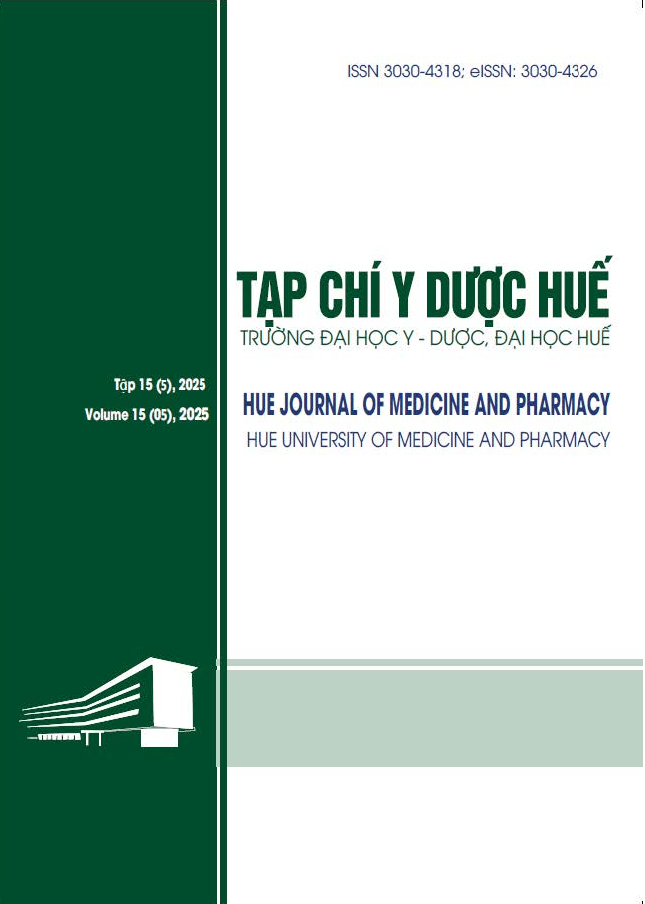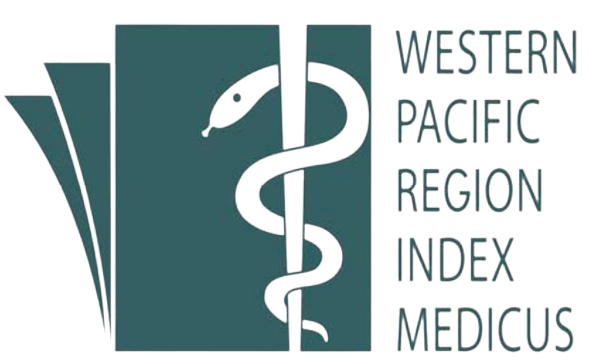Abstract
Purpose: To evaluate of the ethmoid sinus dominance on computed tomography images in eosinophilic chronic rhinosinusitis.
Materials and Methods: 30 patients diagnosed with eosinophilic chronic rhinosinusitis were examined and diagnosed at Department of Otorhinolaryngology - Opthalmology - Odontology, Hue university of Medicine and Pharmacy Hospital from March 2022 to June 2024. Prospective, descriptive study with clinical intervention.
Results: The average age was 43.27 ± 11.20. The proportion of men was 73.3%, the proportion of women was 26.7%. The proportion of patients with allergic rhinitis was 86.7%, and bronchial asthma was 10.0%. Nasal congestion was the main reason for hospitalization with a rate of 56.7%. The percentage of eosinophils in peripheral blood was 4.60 ± 1.94. Of the 16 cases with E/M = 2 according to the Lund-Mackay scoring system, 8 were determined to be negative for ethmoid dominance according to the S-Zinreich scoring system. Further analysis using the Zinreich system revealed 2 additional cases negative for ethmoid dominance.
Conclusion: Assessment of ethmoid dominance is essential for the accurate diagnosis of chronic rhinosinusitis with eosinophilic nasal polyps using the JESREC criteria and for the classification of disease severity and prognosis. The Lund-Mackay score was compared with a more detailed score. The results showed that the Lund-Mackay score alone was overestimated.
| Published | 2025-09-30 | |
| Fulltext |
|
|
| Language |
|
|
| Issue | Vol. 15 No. 5 (2025) | |
| Section | Original Articles | |
| DOI | 10.34071/jmp.2025.5.14 | |
| Keywords | ưu thế mờ xoang sàng, viêm mũi xoang mạn tính polyp mũi tăng eosinophil ethmoid dominance, eosinophilic chronic rhinosinusitis |

This work is licensed under a Creative Commons Attribution-NonCommercial-NoDerivatives 4.0 International License.
Copyright (c) 2025 Hue Journal of Medicine and Pharmacy
En-Tong Wang, Yan Zheng, Peng-Fei Liu, Li-Juan Guo. Eosinophilic chronic rhinosinusitis in East Asians. World J Clin Cases. 2014, 2(12), pp. 873-82.
Sung-Woo Cho, Dae Woo Kim, Jeong-Whun Kim, Chul Hee Lee, Chae-Seo Rhee. Classification of chronic rhinosinusitis according to a nasal polyp and tissue eosinophilia: limitation of current classification system for Asian population. Asia Pac Allergy. 2017; 7(3), pp. 121-130.
Shah S. A., Ishinaga H.,Takeuchi K. Pathogenesis of eosinophilic chronic rhinosinusitis. J Inflamm (Lond). 2016(13), p. 11.
Akiyama K., Samukawa Y., Hoshikawa H. Is the measurement of ethmoid sinus dominance in eosinophilic chronic rhinosinusitis accurate?. Braz J Otorhinolaryngol. 2024; 90(5), pp. 101463.
Đặng Thanh. Nghiên cứu ứng dụng phẫu thuật nội soi trong điều trị viêm mũi xoang mạn tính tại Bệnh viện Trường Đại học Y Dược - Đại học Huế. Đề tài khoa học và công nghệ cấp Bộ, Bộ Y tế. 2012.
Nguyễn Tấn Phong. Phẫu thuật xoang bướm - Phẫu thuật nội soi chức năng xoang: Nhà xuất bản Y học. 1998. tr. 169 - 182.
Lê Thanh Thái. Ứng dụng nội soi trong điều trị bệnh lý về mũi xoan. Giáo trình sau đại học nội soi Tai Mũi Họng: Nhà xuất bản Đại học Huế. 2017. tr. 67 - 73.
Lund V.J., Mackay I,S. Staging in rhinosinusitus. Rhinology. 1993; 31(4), tr. 183-184.
Tetsushi Okushi, Tsuguhisa Nakayama, Shigemitsu Morimoto, Chiaki Arai, Kazuhiro Omura, Daiya Asaka, et al. A modified Lund–Mackay system for radiological evaluation of chronic rhinosinusitis. Auris Nasus Larynx. 2013 Dec;40(6):548-53.
Bùi Minh Châu, Trần Thị Thu Hằng. Đặc điểm lâm sàng, cắt lớp vi tính của viêm mũi xoang mạn tính có polyp mũi và đối chiếu với phân loại mô bệnh học polyp mũi theo EPOS 2020. Tạp chí Y học Việt Nam. 2023:532(1B).






